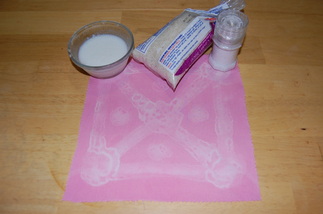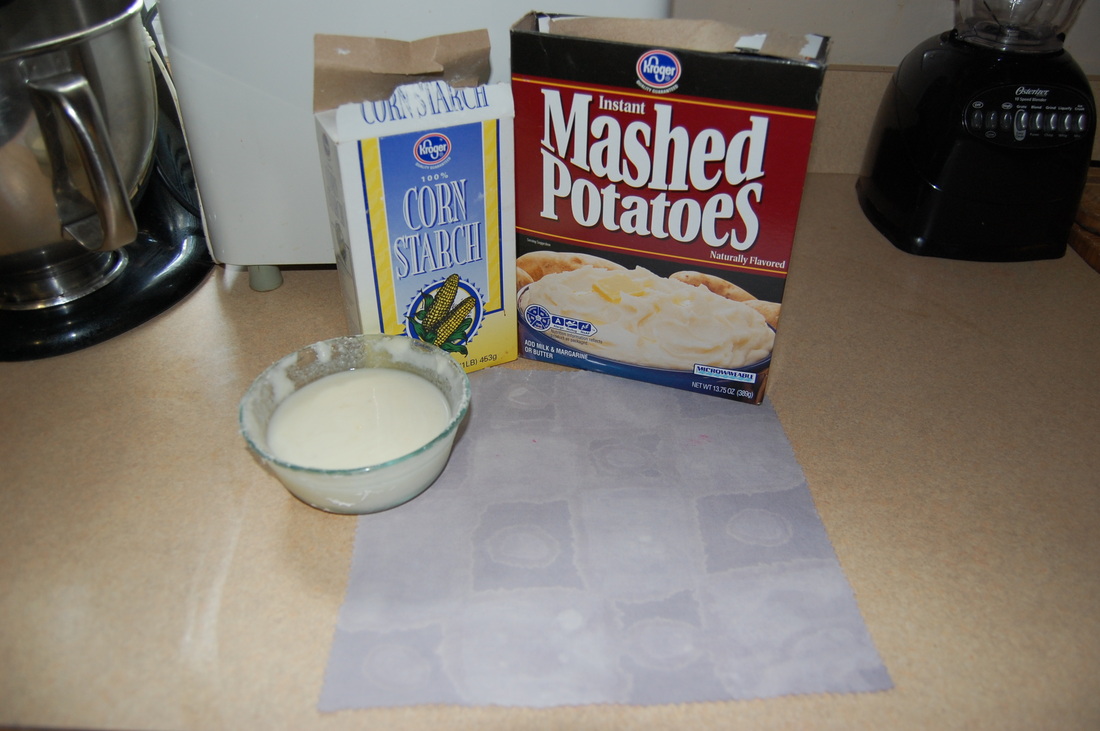batik barrier paste
One of the earliest types of resist used in creating batik fabric was batik barrier paste. There are a few basic types of barrier paste that are traditionally used that include cassava paste and rice paste. There are also some items around the house that artists are using as a budget friendly form of barrier paste.
The most traditional form was created using the cassava root. The cassava plant is commonly found in central Africa where it has been used to create a barrier paste for several centuries. This form of barrier paste is created by cooking, drying and then grinding the root of the cassava plant in order to create cassava flour. The cassava flour is then mixed with water to create a paste. The paste is then applied to the cloth using a feather, brush or stencil to create the desired pattern.
Another common form of batik barrier paste used in batik is rice paste. Rice paste is created by boiling the rice and then grinding up the cooked rice to form a paste. The paste is then used in a similar manner to the cassava paste in that it is applied using brushes or stencils to create a pattern on the piece of fabric.
There are also ways to create batik paste using items you can find around the house. Here are a couple of recipes to get you started.
The most traditional form was created using the cassava root. The cassava plant is commonly found in central Africa where it has been used to create a barrier paste for several centuries. This form of barrier paste is created by cooking, drying and then grinding the root of the cassava plant in order to create cassava flour. The cassava flour is then mixed with water to create a paste. The paste is then applied to the cloth using a feather, brush or stencil to create the desired pattern.
Another common form of batik barrier paste used in batik is rice paste. Rice paste is created by boiling the rice and then grinding up the cooked rice to form a paste. The paste is then used in a similar manner to the cassava paste in that it is applied using brushes or stencils to create a pattern on the piece of fabric.
There are also ways to create batik paste using items you can find around the house. Here are a couple of recipes to get you started.
rice paste recipe1/2 cup rice
2-3 cups water 1 tbsp salt Add salt to water and bring to a boil. Add in rice and cook the rice until tender. Stir frequently to prevent sticking. Once the rice is cooked set it aside to let it cool. Once the rice is lukewarm place it in a blender and grind to a paste. Add water as needed to achieve paste like consistency. |
flour paste recipe1 cup flour
1 cup water 3 tsps alum Mix all ingredients together to a create a smooth consistency. |
Remember, barrier paste does not keep well! It is best to make no more than the the amount that you are going to use for your current project and to make fresh paste each time you create a new piece of work.


